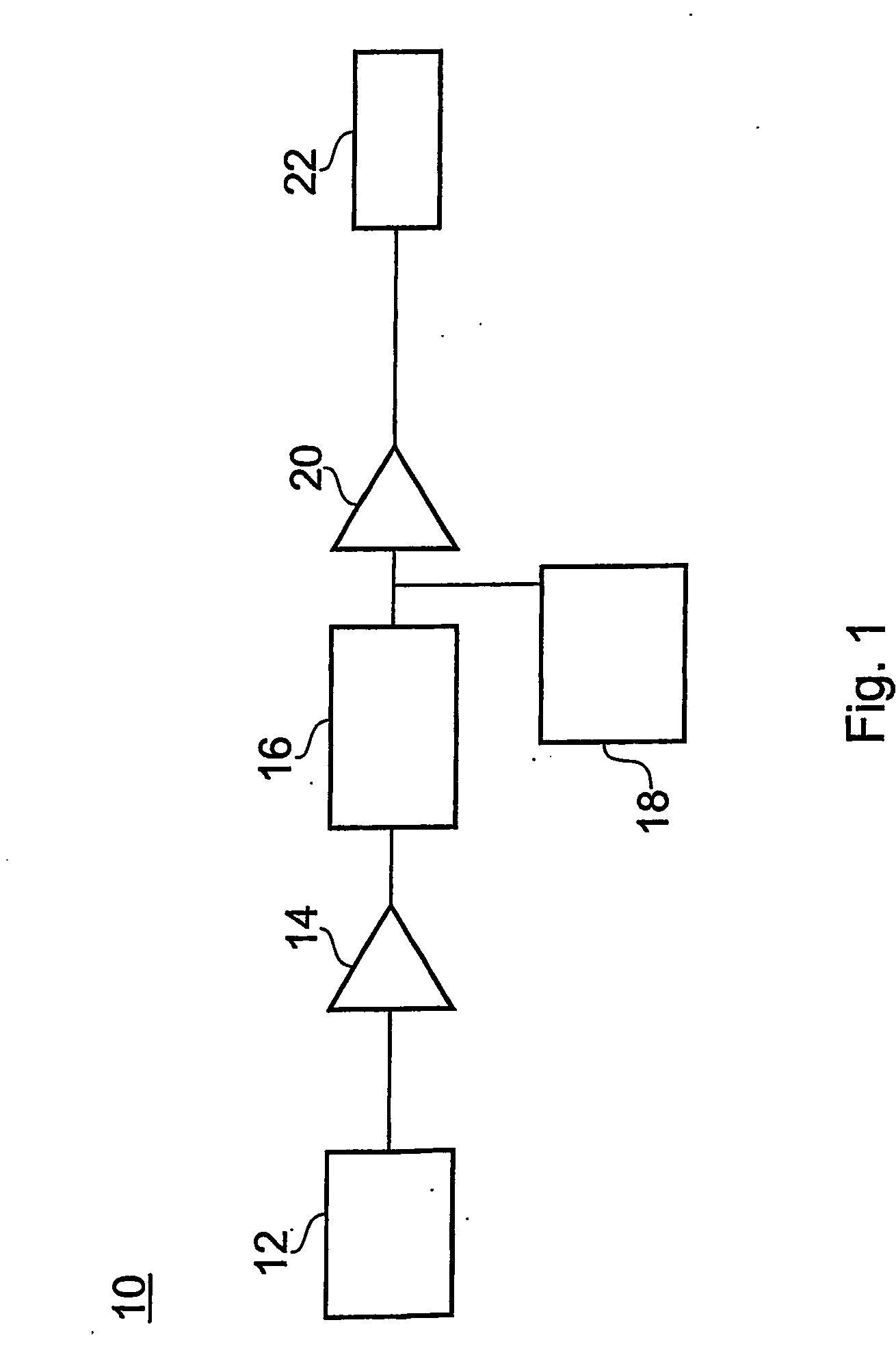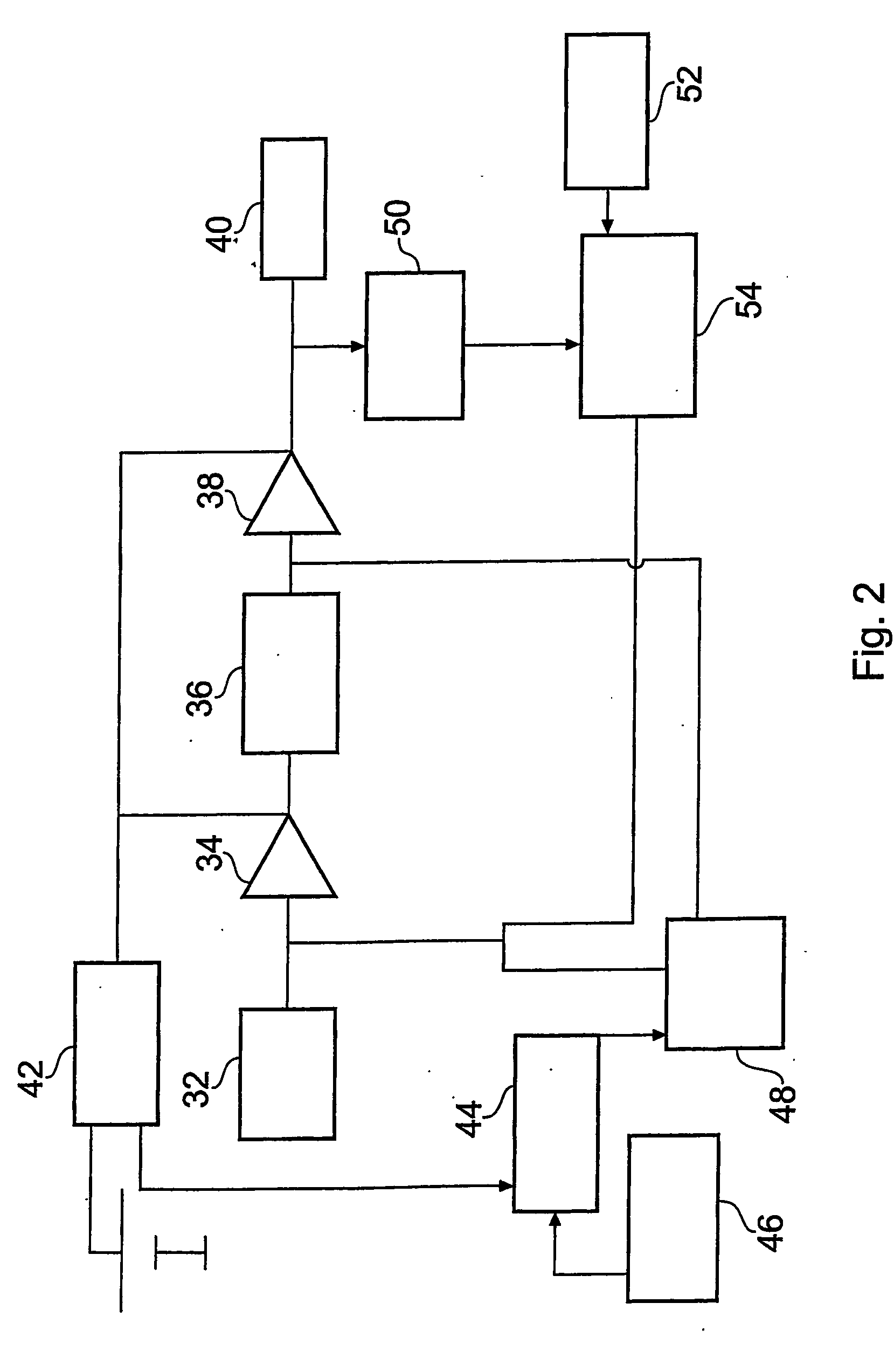Circuit for power amplification
a power amplifier and circuit technology, applied in the direction of automatic tone/bandwidth control, high frequency amplifiers, gain control, etc., can solve the problems of reducing transmission power available, undesirable use of compensatory matching networks, and adversely affecting efficiency, so as to reduce circuit output power variation and mitigate problems.
- Summary
- Abstract
- Description
- Claims
- Application Information
AI Technical Summary
Benefits of technology
Problems solved by technology
Method used
Image
Examples
Embodiment Construction
[0020]FIG. 1 illustrates a RF power amplifier 10, in which a RF signal 12 is input to a driver transistor 14. The collector electrode of the driver transistor 14 is coupled to a capacitor 16, which, in turn is coupled to an output transistor 20. An output bias circuitry 18 is coupled to the base electrode of the output transistor 20. Finally, the collector electrode of the output transistor 20 is coupled to a RF load 22. Generally, the RF load 22 is an antenna.
[0021] In operation, the RF signal 12 is amplified by the driver transistor 14, and the capacitor 16 serves to remove any d.c. component (leaving only the a.c. component) of the amplified signal before it is input to the output transistor 20. An approximately constant bias current is output from the output bias circuitry 18 and functions to bias the output transistor 20 such that the output transistor collector current is controlled.
[0022] The capacitor 16 functions to match impedance in the circuit and can be replaced by an...
PUM
 Login to View More
Login to View More Abstract
Description
Claims
Application Information
 Login to View More
Login to View More - R&D
- Intellectual Property
- Life Sciences
- Materials
- Tech Scout
- Unparalleled Data Quality
- Higher Quality Content
- 60% Fewer Hallucinations
Browse by: Latest US Patents, China's latest patents, Technical Efficacy Thesaurus, Application Domain, Technology Topic, Popular Technical Reports.
© 2025 PatSnap. All rights reserved.Legal|Privacy policy|Modern Slavery Act Transparency Statement|Sitemap|About US| Contact US: help@patsnap.com



